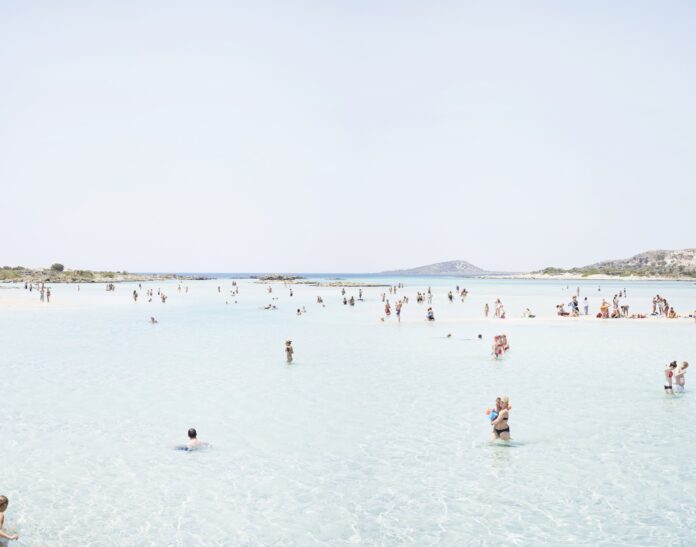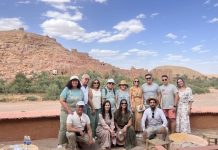The ancient Greeks were among the first to know about therapeutic places – the word comes from their term θεραπευτικός, therapeftikós, meaning curative, helpful, healing – and they constantly took to the road in the hope of finding relief. They went to the Sanctuary of Asclepius in Epidaurus to beg for help for piles and cancer, wind and earache; they went to the Oracle at Delphi in search of wisdom and advice on marriage and career; and had a hundred or so major shrines around the Greek world to choose from to address problems ranging from impotence and infertility to depression and insomnia.
Our species has continued to look out for therapeutic places to travel to. In the 1840s, the German doctor Hermann Brehmer discovered that patients with tuberculosis might be helped by spending many months at high altitude, largely lying horizontally on an outdoor terrace facing the sun. Other places have been recommended to treat ailments of a more diffuse psychological nature.
We don’t need to be convinced believers in religion or adherents of the woollier ends of medical treatment to recognise the overall point: that there are places that can help, parts of the world that can assist us with our troubles in a way that our own homes cannot. The School of Life – an organisation helping people lead more fulfilled lives – has prescribed five places that you can visit that could improve wellbeing.
Alleviating anxiety: Elafonissi, Greece
We may have been tempted to pretend that we came to this part of the world to commune with the spirit of the ancient Athenian statesman and orator Pericles or to admire the exquisite statuette of Athena Promachos in the Acropolis museum. The reality is far simpler: we have come to get warm; we have come to see the world in a primal blinding light. We have come to worship the sun.
Out here on the bleached rocks, looking out over a scorched, treeless landscape, we remember another side of ourselves that had been lost in the preceding six months of darkness. This self can be less envious of others, more serene, less concerned with control, readier to accept the unknown, in touch with its own senses. We find new arguments for hope in the brightness; the uninterrupted enveloping warmth hints that we won’t, perhaps, need to be so afraid, that we can take a chance to trust and that there may be alternatives to anxiety.
Given all that we know about nastiness and despair, cheerfulness is a phenomenal achievement – and the sun-filled places that occasionally inspire it are bearers of their own hugely significant and, in their way, properly sacred wisdom.
Accepting our fate: the Arch of Constantine, Rome, Italy
The Romans gave us the term memento mori (a warning supposedly whispered by enslaved people to their commanders to ward off the dangers of hubris), without suspecting that their entire civilisation would eventually become such a thing for the world. Yet nowadays, the active sense of tragedy around the old stones has dissipated.
Tourists walk by with relative nonchalance. No one actively mourns the loss of the colonies in Algeria or the destruction of the elegant villas on the Bay of Naples. The assumption is that their time was simply up. By the arch there are ice-cream sellers, ticket touts and even some well-mannered actors dressed up as Roman legionaries, offering selfies: the fall of Rome as an endearing comedy.
The Arch of Constantine, Rome (Photo: Massimo Vitali)
Individual life is as imperiled, though a beautiful, egocentric blindness persuades us otherwise. We somehow continue to find the notion of our own deaths implausible even as others fall all around us. If we could witness the eventual fate of every one of our projects, we might laugh darkly.
Would anyone who watched the departure of Julius Caesar’s army on its way to conquer the Gauls, or Marcus Aurelius addressing his immaculately disciplined soldiers on the Rhine, have had it in their hearts to inform these passionate figures of the eventual fate of their efforts?
It is no use merely going to Rome; we have to understand what Rome means for us and our plans, then set about reforming what remains of our lives in its liberating and usefully terrifying shadow.
More on Wellbeing
Casting aside adult concerns: Omoide Yokocho, Shinjuku, Tokyo, Japan
We know that what we should really have are friends, that what we really need is a project, that what we really crave is touch and that what would properly revive us is love. But those fine and beautiful things are not always necessarily readily available. And that is why, in the fallen world we inhabit, it is a notable piece of good fortune that we can every now and then visit a place like Ayumu’s restaurant in a tangle of streets just south of Shinjuku Station in Tokyo.
Restaurant in Omoide Yokocho, Shinjuku (Photo: Jean-Jacques Lorin)
A restaurant won’t directly solve any of our deeper problems: it can’t guide us through the maddening complexities of our domestic arrangements or help us build a satisfying career. What it can do is provide us with a much-needed degree of consolation. Here, we can be looked after for a couple of hours in a way we perhaps last knew as children when competent, kindly adults took it upon themselves to try to make us happy. Even as we battle through the trickier days of our lives, we’re never too far from a quiet table and a menu – and Yoshi waiting with artfully feigned patience to take our order.
Understanding the passage of time: San Juan River, Utah, US
One of our greatest difficulties – which gives us problems in so many areas – is that we can’t understand time. The sharp bends in the San Juan River in southeastern Utah appear to know our problem well enough and offer us a powerful solution to it. We cannot spend more than a moment in their company without sensing that we are being told something very powerful about time; more specifically, how much of it there has been – and how little of that has been about us, the shocking headlines and the mesmerising scandal. The San Juan River has very slowly cut a winding 300m-deep canyon through 300 million years of time.
The San Juan River at Mexican Hat in Utah (Photo: Getty)
The San Juan River is content, through its majestic beauty, to make an overall point that should reach us through our senses as much as it does through our understanding. It really only wants to say one very simple thing to us nonexperts in its ancient gravelly voice: that it is very, very old, and that we are very, very short-lived. And on that basis alone, we should probably surrender our absurd and painful sense of the seriousness and importance of all that we are and do.
Preventing despair: The Alhambra, Granada, Spain
The climate in southern Spain allowed North African Muslim Berbers to create pieces of horticulture which astonish and seduce us to this day. The idea of a garden has always been central to Islam for reasons that are at once hopeful, because nature is so beautiful, and deeply melancholy, because life itself can never be made perfect.
lslam recommends a technique to prevent us from losing our poise and despairing: we should become bustani, or gardeners. The enlightened should redirect their frustrations with the state of humanity towards the construction of a hadiqa, or walled garden. Within its limited circumference, with due modesty, it can be endowed with many of the qualities of the eventual garden of paradise.
This is an edited extract from The School of Life’s A Therapeutic Atlas a compendium of therapeutic places that may offer us a holiday or respite from certain difficulties of our psyches; places that can help us to reframe our difficulties, shed new light on our mental blocks, lift our moods and restore us to a measure of calm and purpose. The School of Life is an organisation helping people lead more fulfilled lives










